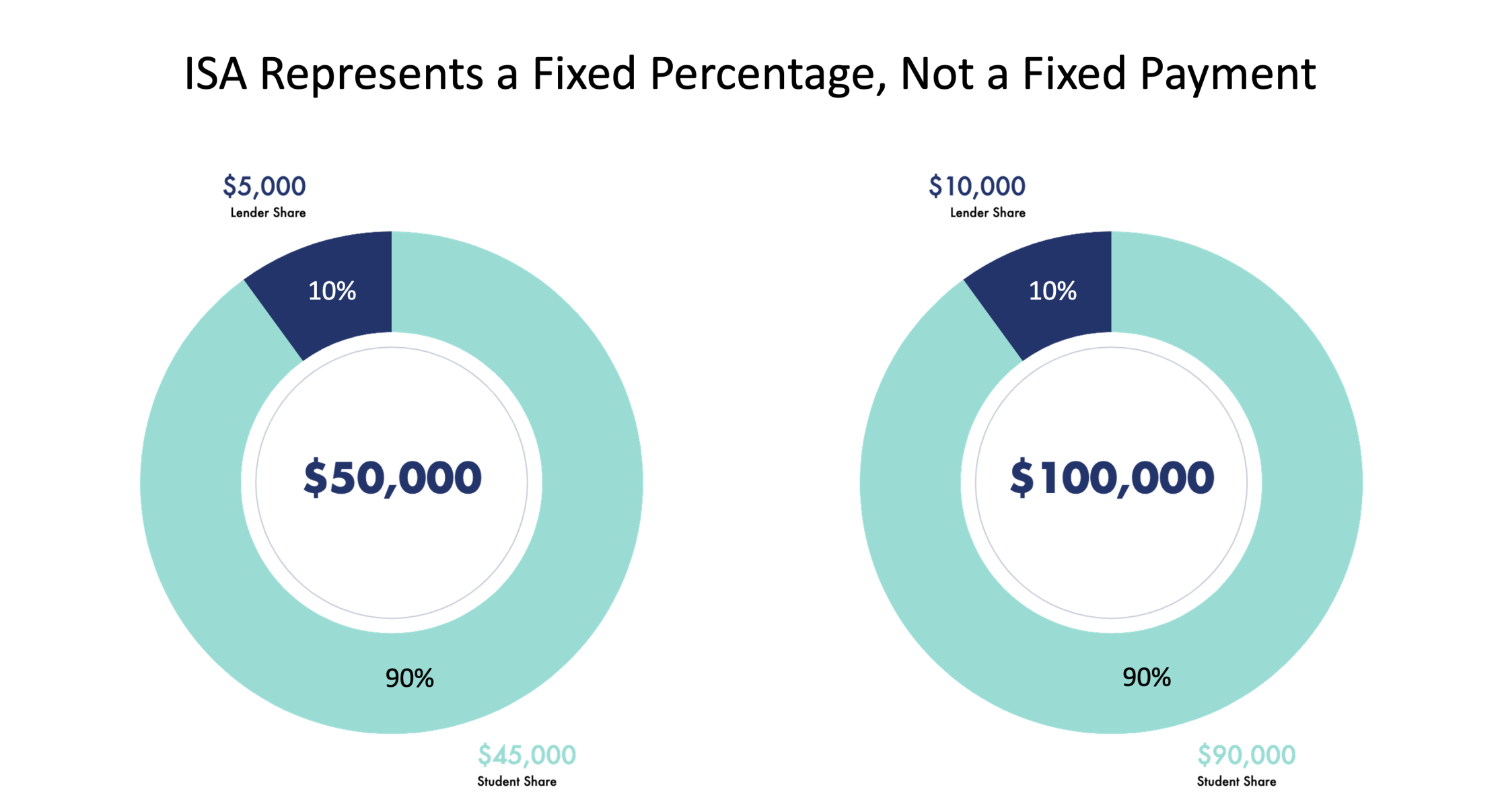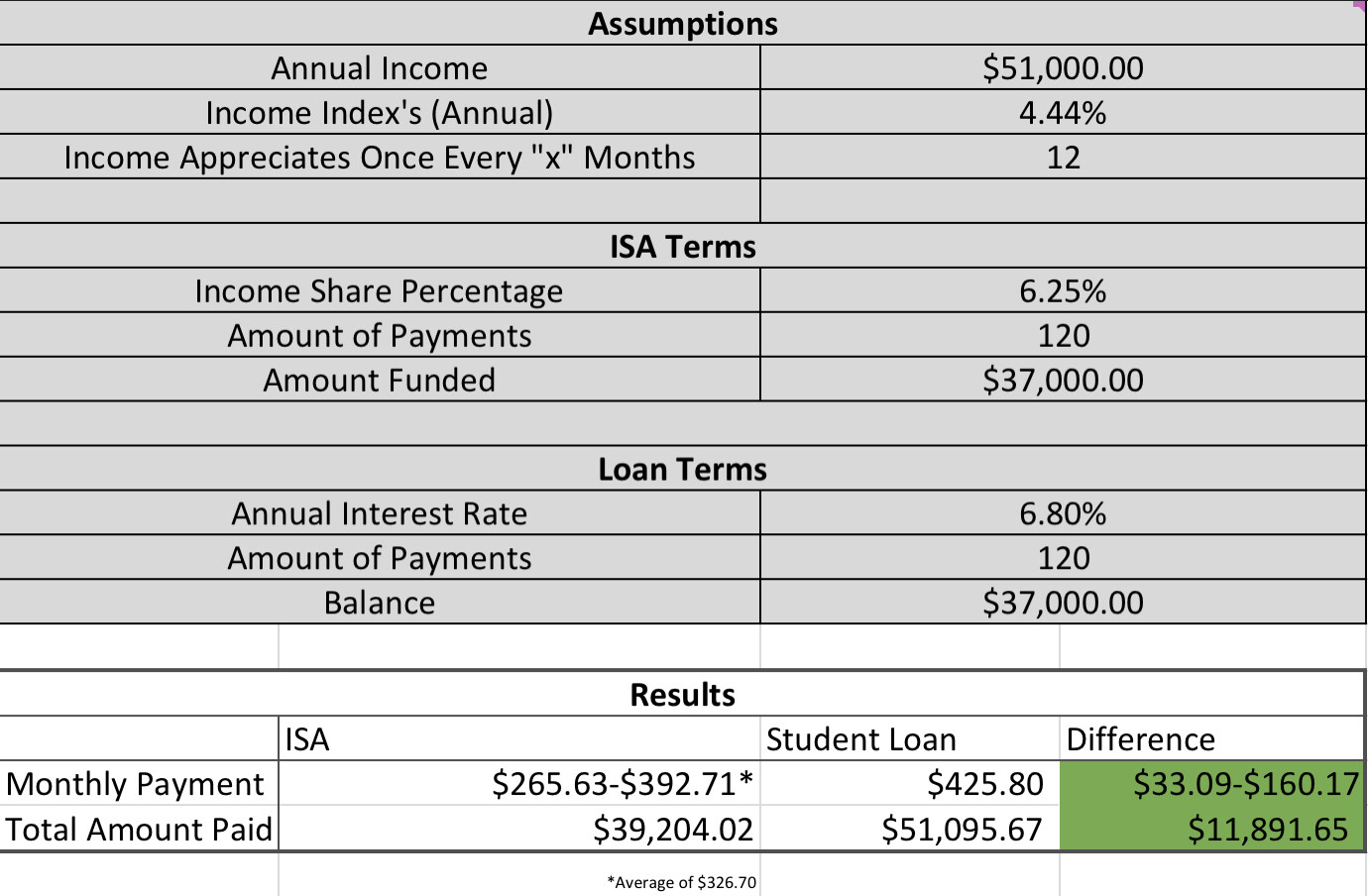It's an unfortunate fact of being American, that we have one of the worst higher education financing systems in the world. Innovators have taken an interest in revolutionizing the way we finance higher education through the use of alternative finance, a subsection of FinTech. Over the past five years, Income Share Agreements (ISA's) have emerged as being the flagship alternative finance product to solve the student debt crisis. Are Income Share Agreements the new student loan?
At its core, an Income Share Agreement is a contract between a student and a lender. ISA's are lending, without debt. In simple terms, the lender agrees to pay a student's tuition, and in return, the student pays the lender a fixed percentage of their income, for a set number of payments. With ISA's, the lender is betting that the student will have high earning potential after graduation, because the greater the students' income, the larger the payment they make to the lender (but also the more they get to keep for themselves). Unlike traditional debt, ISA's are not based on a balance and have no interest - they're strictly based on a fixed percentage of earnings for a fixed number of payments, regardless of the amount paid back. ISA's are considered complete after the borrower either 1) makes the full number of payments, or 2) reaches the Payback Cap (more on this later), whichever comes first.
In this article, I’m looking at ISA’s and their benefits strictly from the borrower's perspective. Let's look at a simplified example. In this example, a student, Julie, enters into an ISA where she agrees to pay 10% of her income for 120 monthly payments (10 years), starting after she graduates. Upon graduation, Julie lands a job paying her $50,000/year. Therefore, annually, she would pay the lender $5,000 ($50,000 x 10%), which equates to approximately $417/mo ($5,000/12 months). If Julie's income stays constant, her payment amount stays constant. Now, let's assume that after five years, Julie gets a promotion, bringing her total annual income to $100,000. Her annual ISA payment will be $10,000 ($100,000 x 10%), and her monthly payment will be approximately $833 ($10,000/12 months). When a borrower's income increases, they do pay more, however, they also have more for themselves. The payments are always proportional to the borrower's income.
Add alt text

Unlike student loans which lack flexibility, ISA's have become a very borrower-friendly vehicle. First, most ISA's provide a downside safety net, whereby the borrower does not pay if they are making below a minimum income threshold. For example, if the minimum income threshold is set at $30,000/year, and the borrower earns under this amount, they have the opportunity to either defer or skip payments (depending on your lender). Therefore, borrowers who can barely afford to live, do not need to worry about another financial burden (their ISA's). Next, most ISA's provide an upside safety net, also known as a Payback Cap which is the highest total amount you would ever pay on your ISA. If at any point, the total amount paid back equals the Payback Cap, your ISA is considered complete, regardless of how many monthly payments remain.
In the example above, if Julie suddenly loses her job (income of $0), decides to pursue higher education, or earns less than the minimum income threshold, she can defer or skip her ISA payments until her income rises above that threshold. On the converse, if Julie finds a very high-paying job (and therefore has high payments on her ISA), she may be able to fulfill her ISA early by reaching the Payback Cap (either 'naturally' by having a higher salary, or through a lump-sum payment). If her Payback Cap is set at $40,000, she will never pay more than $40,000 on her ISA, because once that amount is paid, she's done! In contrast, some borrowers with student loans end up paying five or six times the principal amount borrowed (due to compound interest); The Payback Cap is designed to fight against this by ensuring that the maximum payback does not exceed two to three times the amount borrowed (depending on the lender).
Add alt text

So now we know why ISA's are so attractive to students, but what is the economic benefit to a student with an ISA? I created two models to compare an ISA with a traditional student loan. To make things simple, and easy to understand, all the assumptions are based on nationwide averages.
- The ISA model is based on a $37,000 principal with terms of 6.25% of income for 120 payments (10 years). The ISA holder has a starting salary of $51,000 with annual income growth of 4.44%.
- The loan model is based on a $37,000 student loan amortized with a 6.8% APR and a 10-year term.
What were the results?
With the student loan, the borrower would pay $426/month, and with the ISA, the borrower would start by paying $266/month. This monthly savings of $160, is a really big deal for recent graduates who are just getting their feet off the ground. Even as their income increases, the highest monthly payment on the ISA using this model would be $393, still $37 less than the student loan payment. Over the course of the ISA (as compared to the student loan), the borrower would save approximately $11,891 which is just the financial benefit; the model doesn't even account for the intangible value the ISA adds with the flexibility clauses.
Add alt text

How are ISA's able to save the borrower money? First, ISA's allow students to defer, penalty-free and do not have interest. With student loans, if you defer, your balance continues to grow due to compounding interest. This makes ISA's much more predictable than student loans because borrowers aren't penalized in any way for deferring. Additionally, ISA's have no growing or declining balance borrowers need to pay - it's strictly based on paying a fixed percentage for a fixed number of payments (or until the Payback Cap is met, whichever comes first), that's it!
Are ISA's the "new" student loans? The ISA industry is still in its most nascent stage, but we'll see over the coming months and years if ISA's will replace traditional student debt. I'm personally a big proponent of ISA's and their potential. That's why I'm building FSCL, a company pioneering the use of alternative finance vehicles to build a more simple, affordable and flexible solution to finance higher education. What do you think, will ISA's replace student loans?
